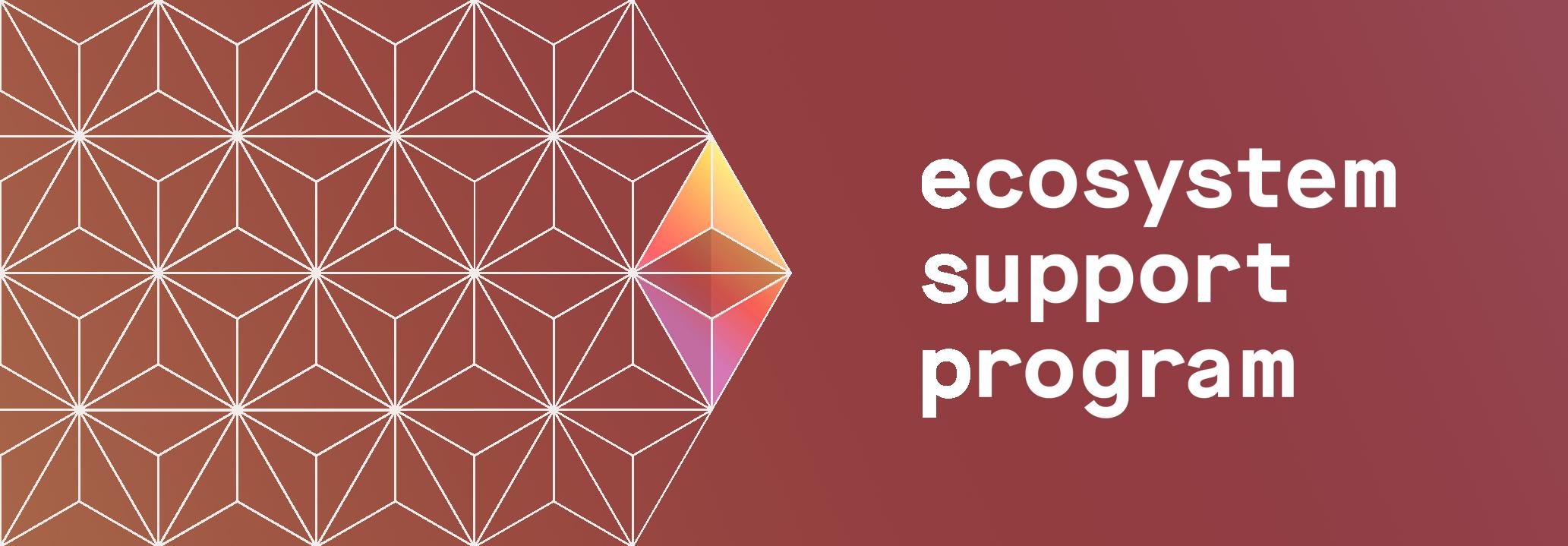The Ecosystem Support Program is an arm of the Ethereum Foundation dedicated to providing financial and non-financial support to projects working to help Ethereum grow and thrive.
We recently published an update detailing how the Ecosystem Support Program spent 2019, and how we allocated financial support throughout the year. Going forward, we’ll be sharing allocation updates on a quarterly basis.
2020 got off to a strange and difficult start, but Ethereum’s builders have kept on building through it all. The ESP team are grateful to be able to continue supporting teams as they work to make Ethereum better and stronger than ever.
We awarded a total of $2,564,000 in financial support over the first quarter of 2020. These funds went toward a wide variety of projects, from those using cryptoeconomics to incentivize quality content suggestions on social media, to critical work on Eth1 client diversity, interoperability, continued progress on Eth2 clients, and more.
| Category | Grantee | Summary | More info |
|---|---|---|---|
| Developer Experience | 2 of 2 scorched earth | A decentralized system for peer-to-peer content suggestion utilizing a "Two Of Two Scorched Earth" reward/punishment scheme proposed by Vitalik Buterin to incentivize quality content sharing. The goal of the project is to deliver a proof-of-concept implementation on mainnet to demonstrate the usefulness of this scheme for a variety of applications. | |
| Developer Experience | EthWorks | Maintenance and improvements on Waffle, a library for writing and testing smart contracts. Grant objectives include ENS integration, expanded documentation and addition of dynamic mocking. | https://github.com/EthWorks/Waffle |
| Developer Experience | POA Network | The Arbitrary Message Bridge can not only transfer tokens between any two EVM-based chains, but can relay any data or call contracts - for example, calling a method on the Ethereum mainnet from POA network or a Quorum Chain. The grant to POA Network will be used toward expanding AMB's capabilities, creating demos and preparing for 2.0 support. | https://www.poa.network/ |
| Ethereum 1.0 | Nethermind | Renewed funding to Nethermind for battle-testing the Nethermind 1.x client, launch of beam sync, and improving performance to increase miner adoption. | https://nethermind.io/ |
| Ethereum 1.0 | Tasit SDK | The Tasit SDK is a JavaScript framework for building native Ethereum mobile dapps using React Native, with a focus on user experience and easy onboarding. | https://github.com/tasitlabs/tasitsdk |
| Ethereum 2.0 | Fast Binary Field FFT | Implementing a fast binary field FFT which is necessary in order to estimate the difficulty of computing data availability roots; with additional exploration into whether it's better to use 16 vs 64 bit fields in the light of special CPU support for the latter. | |
| Ethereum 2.0 | Lighthouse | Continued funding for Sigma Prime in developing the Lighthouse staking client, written in Rust, for the Ethereum 2.0 network. Lighthouse v0.11.1 testnets are up and running, with user-facing testnets coming soon. | https://github.com/sigp/lighthouse |
| Ethereum 2.0 | Lodestar | Continued funding for Chainsafe's work on Eth2 light-client R&D within their Lodestar javascript client, as well as further development of libraries, tooling, and educational resources supporting the Eth2 JS/web-browser ecosystem. Results from an audit of a number of Lodestar's key components were recently published. | https://chainsafe.io/ |
| Ethereum 2.0 | Nimbus | Continued funding to Status for development of the Nimbus client for Ethereum 2.0. Nimbus is designed to perform well on embedded systems and personal mobile devices, including older smartphones with resource-restricted hardware. Nimbus is nearing a v0.11.1 testnet release. | https://nimbus.team/ |
| Ethereum 2.0 | VDF Continuation Funding | Research led by renowned complexity theorist Ryan Williams into the sequentiality assumption of RSA-based VDFs, i.e. seeking a better understanding the "delay" part of VDFs (verifiable delay functions), which are the basis for unbiasable randomness in Eth2. The work funded by this grant is specifically aimed at proving information-theoretic lower bounds for modular exponentiations. | |
| Indirect Funding | Gitcoin bounties | Funds for community-administered bounties contributing to Ethereum ecosystem development. | https://gitcoin.co |
| Layer 2 | Plasma Chamber | Cryptoeconomics Labs is working toward a production-ready implementation of Plasma Chamber based on OVM. Expected grant outcomes include testnet deployment of the OVM contract, a Plasma wallet, and a developer portal with tooling and documentation. | https://www.cryptoeconomicslab.com/ |
| User Experience | ENS Continuation Funding | Continued development of Ethereum Name Service, including full DNS namespace integration, using ENS and IPFS to store and serve DNS names; multi-coin support; improvements to the ENS website and Manager; advocacy and outreach. | https://ens.domains/ |
We look forward to watching these projects continue to grow, and to seeing their impact on the Ethereum ecosystem; and we hope to celebrate with them as they reach milestones along the way. Follow along with these and other supported teams on Twitter @EF_ESP, or by signing up for our newsletter on the ESP website!
Until next time,
The ESP Team


